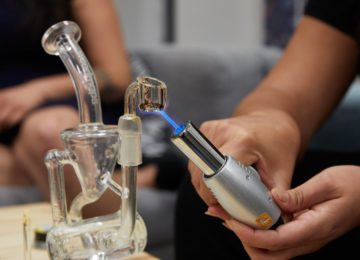A person’s look and the way they dress often gives a first impression to others. It is no surprise people are willing to spend more on improving their appearance and make them feel confident of themselves. However, this may not be easy if a person experiences medical issues affecting them. While issues like acne affecting the face makes many health companies develop products to solve this, hair problems are also another common issue affecting a person’s look. There are several issues affecting the hair, one of them is alopecia areata.
Alopecia areata is a disease affecting the hair through attacks from the immune system destroying hair follicles. This often leads to hair loss. Alopecia areata typically affects the head and the face although any hair on the body can be affected. Alopecia areata may seem a scary occurrence but usually it just affects the hair and at times changes to nails. This disease does not cause any other symptoms. Safe to say, people with alopecia areata are generally healthy.
Alopecia areata can develop at any age of life but most people get it during their childhood and teenage years until in their thirties. Those affected by this disease at a young age of below 10 years old usually have extensive and progressive outcomes. Genetics plays a role in alopecia areata, which means if a person’s close family already have this disease, they are at high risk for developing this disease. However, many people who experience alopecia areata do not have family history of the disease. People with certain autoimmune diseases and allergic conditions are said to be susceptible to alopecia areata.
Hair loss tends to be unpredictable. It usually starts with sudden loss of hair on the scalp in a round or oval patch. Sign of “exclamation point” that shows hairs narrower at the base compared to the tip or short broken hairs can be found around the edges of the patch. Some people may complain of tingling, burning or itching on the patches of skin before hair loss but typically no sign of inflammation such as redness or rash can be seen on the bare patches. Regrowing it is possible even without treatment but the hair that just regrown may actually fall out again. The hair regrows within a few months with white or grey colour initially, and may regain its natural colour as time goes by. If alopecia areata affect the nail, it causes changes such as ridges, dents, ridges or brittle nails.
Since alopecia areata can be quite frustrating as it affects a person’s quality of life, dealing with it can immensely help a person feel better of themselves. It is best to get medical advice right when you see signs of unusual hair loss. The aim of treatment or therapy is to halt the immune system from attacking hair follicles and to help hair growth. Doctors or dermatologists can suggest treatments available to help your hair grow much faster and better. This includes usage of corticosteroids either topical or injection and hair growth stimulants such as minoxidil. If the damages are extensive, immunotherapy or immunosuppressant may be suggested. Usage of hairpieces or wigs to conceal hair loss may be considered.
Apart from treatments given by doctors or dermatologists, a person with alopecia areata might want to visit mental health professionals. Research shows people with these hair issues have a higher level of emotional distress, hence getting emotional aid may be helpful to treat this condition. Use sunscreens to cover the bare areas and to protect it from sun damage. Since people with alopecia areata have higher risk for certain diseases, it is important to regularly visit your doctors for health check-ups.












